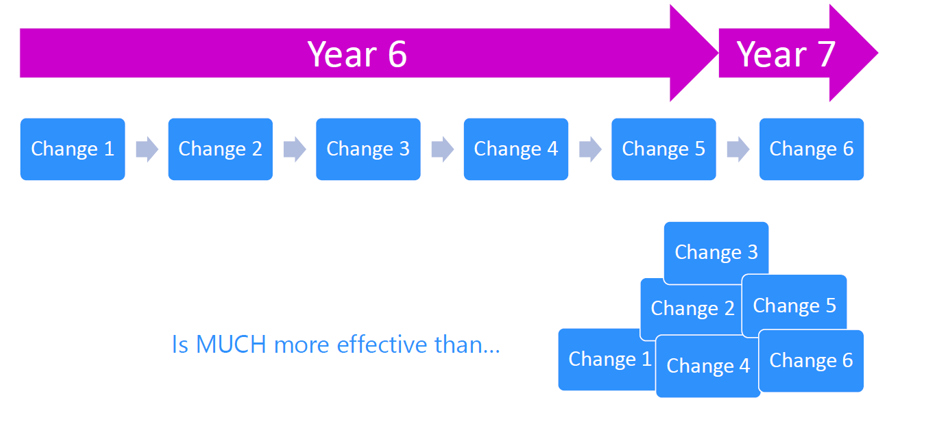There are lots of things that schools can do to help children and young people prepare for the move to secondary school. For example developing skills to cope with change, build resilience, self-confidence and self-esteem. These preparations need to be planned for and take place gradually before the point of transition to enable the child or young person to practice and utilise the skills they have learnt.

The following are a few of the things parents, carers and teachers can do in preparation for transition to secondary school:
- Check in with the child or young person to find out how well they are coping academically as well as with their well-being.
- Keep an eye on how they are socialising. See if they are making friends and developing relationships in positive peer groups.
- Help the child or young person to be cyber-savvy and understand how to be safe online.
- Create opportunities for parents, carers and teachers to communicate so any concerns can be shared and questions asked.
Create social events: These can be created between settings and could include:
- Talks
- Taster days
- Question and answer sessions with the child, young person and parent or carers
- A peer support or buddy system
Transition sessions: Deliver transition sessions during the summer term to prepare the child or young person. Extra transition sessions and activities may be needed for children who find change more difficult.
Share detailed information with school receiving child or young person:
This could involve:
- If there have been discussions and/or concerns about the level of support a child or young person is currently needing and is likely to continue to need, this information must be shared with the receiving secondary school.
- Formal meetings
- Review and handover meetings
- Transitional joint working between primary and secondary special educational needs staff
- Put a plan in place to address barriers before the transition starts e.g. equipment, resources, staff training, support
- Identifying a key worker in the secondary school or new school who will work closely with the child or young person
Useful resources:
Webinar: Supporting Successful Transitions from Primary to Secondary School – YouTube Whole School SEND. This webinar will explore key strategies that support effective transitions from Year 6 to Year 7 for pupils with SEND. The webinar will focus both on the role of the primary school and the Year 6 teacher as well as the role of the receiving secondary school, including teachers and pastoral leaders of Year 7. Examples of best practice and evidence-based approaches will be shared.
Moving Up! The transition to secondary school – YouTube Moving Up! The transition to secondary school is an animation aimed to help year 7 and 6 pupils feel more confident, less anxious and better equipped to cope with the changes associated with moving to secondary school by Anna Freud
Transitions and change for care-experienced young people in school – YouTube Rebecca Brooks is an Education Policy Advisor at Adoption UK, a former secondary school teacher and foster carer. Now an adoptive parent, her work at Adoption UK focuses on assessing the impact of education policy on adoptive families and adopted children and young people and supporting education professionals with guidance, training materials and resources.
Last updated 26 January 2022
 Tools for Schools
Tools for Schools